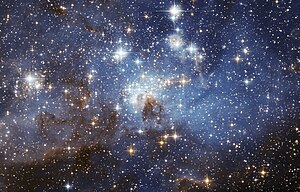Summary:
Quaternary has two epoch Pleistocene and Holocene; Quaternary has 1.8 million years ago; The Holocene is last ~10,000 years of Earth's history. The Holocene has human civilization. The Pleistocene has 1.8 million to ~10,000 years ago, the pleistocene is last Ice Age 1.8- 0.011 million years ago; has many Pleistocene megafauna; but a mass extinction of large mammals and many birds about 10,000 years ago. At times; the glacial ice reached for down into part of North America, Europe and Asia. This is commonly referred to as an Ice Age.
VIDEO/GLOG:
Project Reflection:
1: What did you enjoy most about this project?
I think enjoy most about this project is mass extriction .
2: What was most challenging about this project? why?
I think most challenging this project is how to human began; because this project only tell we, what happen for the times. didn't tell about how to human began.
3: What you change about this project and why?
I think i will change my glog, because look like has many write and pictures.
4: What are 3 things that you learned from this project?
I learned from this project is mass extriction\ Ice Age\ where is human began.
IHSL HuiMIng
Monday, December 12, 2011
Sunday, November 13, 2011
The Stars - Blog Entry
1. What is a star?
The star has different temperature, luminosity, size, color, ages, spectral class and star type.

2. Type of stars

The star type has White Dwarfs, Main Sequence, Giants, Supergiants.
3. H-R Diagram

The H-R Diagram is astronomers graphical the stars luminosity; spectral type; color; temperature and change stage.
4. Nuclear Fusion

This is usually accompanied by the release or absorption of large quantities of energy. Fusion is the process that powers active stars, the hydrogen bomb and experimental devices examining fusion power for electrical generation
5. The life cycle of a star

A star is a luminous globe of gas producing its own heat and light by nuclear reactions (nuclear fusion). They are born from nebulae and consist mostly of hydrogen and helium gas.
The star has different temperature, luminosity, size, color, ages, spectral class and star type.

2. Type of stars
The star type has White Dwarfs, Main Sequence, Giants, Supergiants.
3. H-R Diagram
The H-R Diagram is astronomers graphical the stars luminosity; spectral type; color; temperature and change stage.
4. Nuclear Fusion
This is usually accompanied by the release or absorption of large quantities of energy. Fusion is the process that powers active stars, the hydrogen bomb and experimental devices examining fusion power for electrical generation
A star is a luminous globe of gas producing its own heat and light by nuclear reactions (nuclear fusion). They are born from nebulae and consist mostly of hydrogen and helium gas.
Wednesday, October 19, 2011
Planet Profile
Planet Profile
Hui Ming Chen
CLASS:L
PLANET: Jupiter
Diagram:
Jupiter from the sun has 778.4 million km.
MASS: 317.87 kg diameter: 143,884 km
ROTATION: 9h 50min 30s REVOLUTION: 12yr
Number of moons are 63
Jupiter is Jovian
Jupiter description
· Largest planet
· Has faint rings
· Atmosphere is mostly hydrogen and helium. Continuous storms swirl on the planet – the largest is the Great Red Spot.
· Have four large moons and at least 57 smaller moons; one of its moons 10 has active volcanoes.
2 interesting facts
· Jupiter is shortest rotation on its axis, 9h 50min 30s.
· Jupiter has the largest diameter.
Thursday, October 6, 2011
Hurricane Irene Project
Critical Thinking
1: What is a hurricane?
1: What is a hurricane?
Hurricane is a large rotating strong winds and winds.
2: What is a high tide and what causes it?
The high and low tide are two time for each day; The tides causes are moon, sun and earth from a right angle or line up in one row; the movement of the moon around the earth, the gravity of the moon.
3: What does saturation (zone) mean?
Saturation zone is filled with water. the groundwater have a saturation zone. If the water more than saturation zone, the water will be come out to the flood, so has flooding.
4: What is flooding and why is it dangerous?
The flooding is a large water come out the riverbanks. flooding is dangerous, because has a large water come out to the flood, if has too much water the people will be die.
REFLECTION:
1: what is something that you liked about this Mini-Project?
I like do the groundwater project. because i can know about where is groundwater from and what is effects for groundwater.
2: what was difficult for you on this project?
In this project tides is difficult.
3: what would you change about you work on this project?
I change my think, because when i don't learn this project, i think the groundwater is from the ocean.
4: how did this project help you learn about Hurricane Irene?
I learn the why has hurricane.
Subscribe to:
Comments (Atom)

